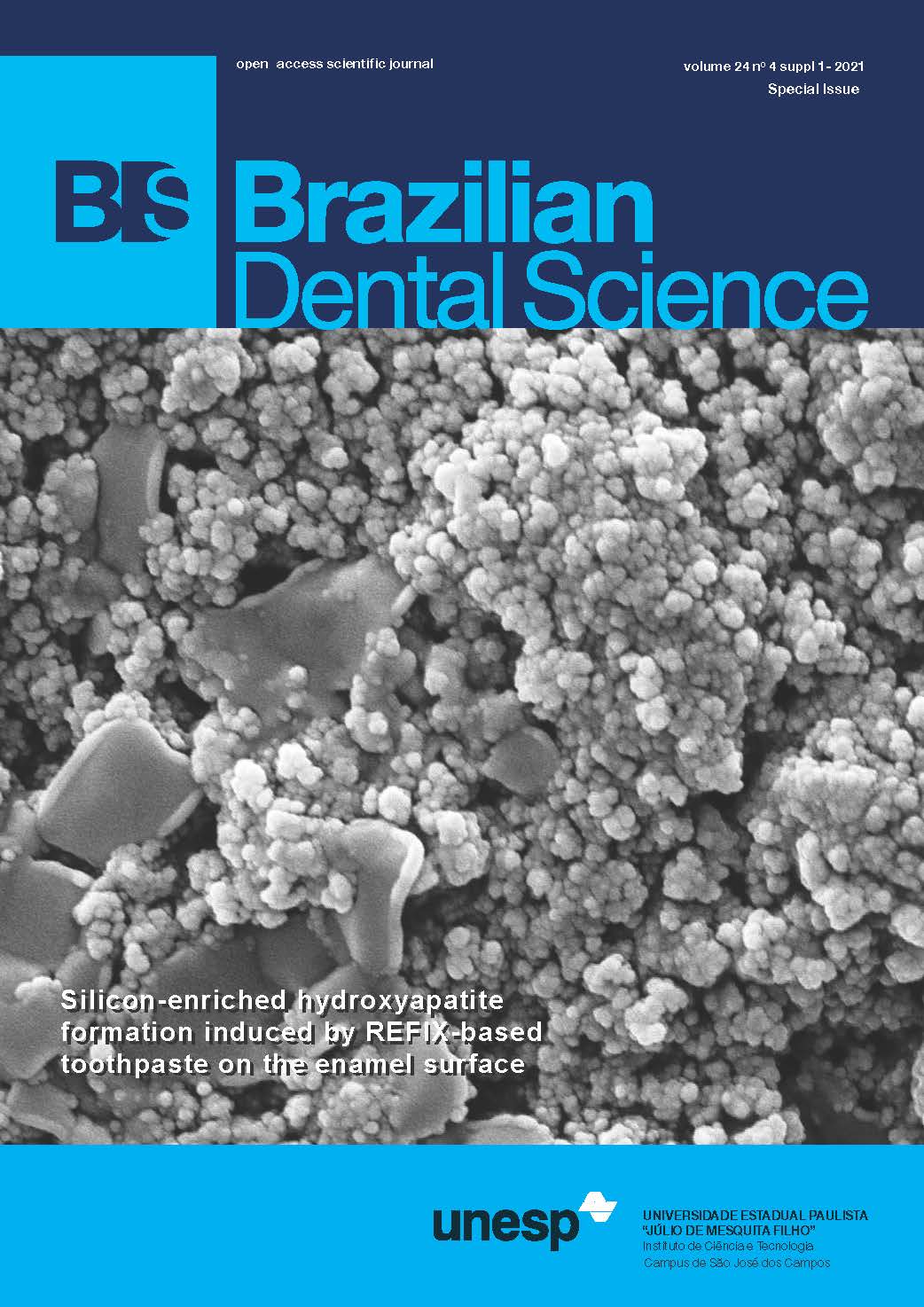Trueness and precision of the reproduction of dental casts by the conventional, milling and 3D printing techniques
DOI:
https://doi.org/10.4322/bds.2021.e2891Resumo
Objective: To compare the reproduction trueness and precision of dental casts made by the conventional, milling and 3D printing techniques. Material and Methods: From an upper right side half-arch reference model (RM), 72 models were obtained and divided into three groups: conventional (CM), milled (MM) and printed (PM). All models were scanned and converted into standard tessellation language (.STL) files. The files were superimposed using 3D analysis software, and statistical analysis was performed using the root mean square (RMS) values obtained. The Shapiro-Wilk test was used to assess normality, and the Kruskal-Wallis test was used to compare groups (p < 0.05). The Mann-Whitney U test was used for multiple comparisons among groups (p < 0.017). Results: There were significant differences in trueness (p = 0.000; p <0.001) and precision (p = 0.000; p < 0.001) among the three dental cast groups. Regarding trueness, CM presented better results, followed by MM and PM. Regarding precision, MM showed better results, followed by PM and CM, which did not show significant differences. Conclusions: For dental cast reproduction the conventional technique has the best trueness and the milling technique has the best precision.
KEYWORDS
Trueness; Precision; Milling; 3D printing; Dental cast.
Downloads
Downloads
Publicado
Como Citar
Edição
Seção
Licença
TRANSFERÊNCIA DE DIREITOS AUTORAIS E DECLARAÇÃO DE RESPONSABILIDADE
Toda a propriedade de direitos autorais do artigo "____________________________________________________________________" é transferido do autor(es) para a CIÊNCIA ODONTOLÓGICA BRASILEIRA, no caso do trabalho ser publicado. O artigo não foi publicado em outro lugar e não foi submetido simultaneamente para publicação em outra revista.
Vimos por meio deste, atestar que trabalho é original e não apresenta dados manipulados, fraude ou plágio. Fizemos contribuição científica significativa para o estudo e estamos cientes dos dados apresentados e de acordo com a versão final do artigo. Assumimos total responsabilidade pelos aspectos éticos do estudo.
Este texto deve ser impresso e assinado por todos os autores. A versão digitalizada deverá ser apresentada como arquivo suplementar durante o processo de submissão.




























